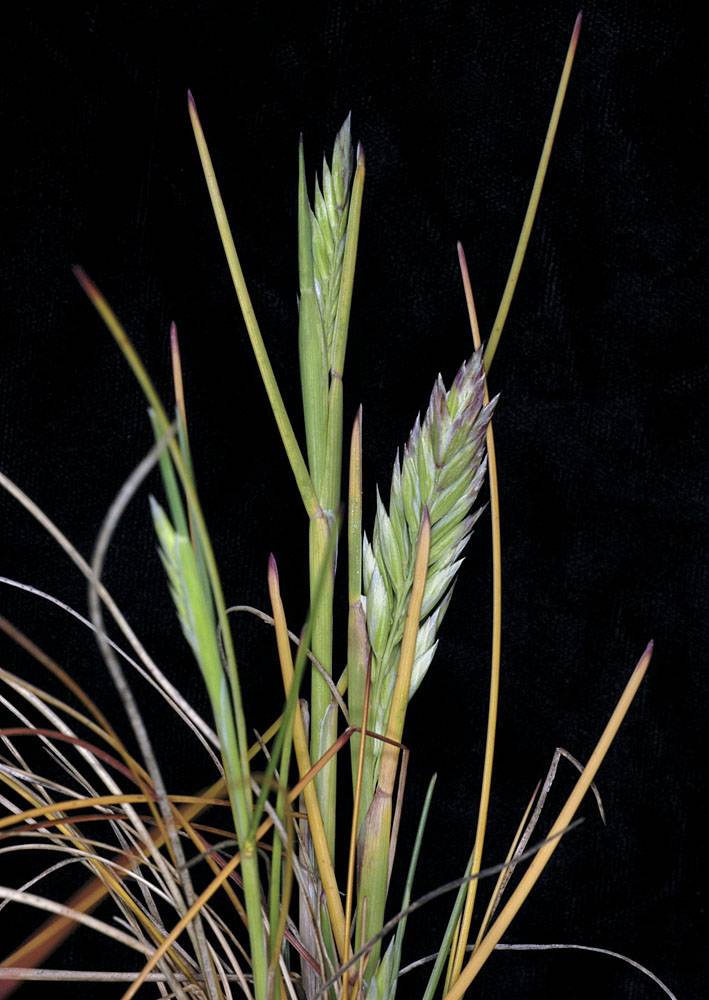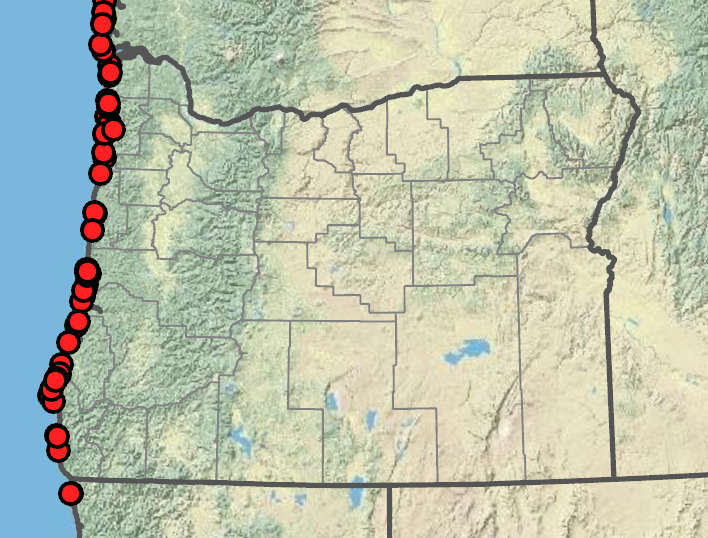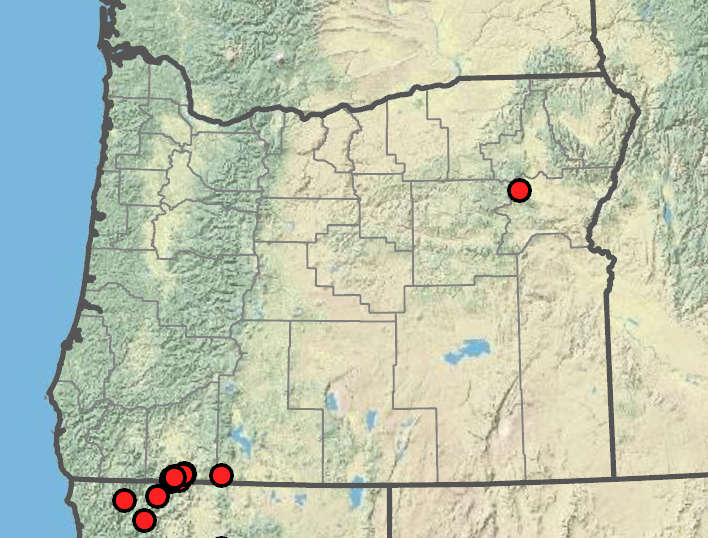Poa macrantha
Poa pringlei
seashore bluegrass
Pringle's bluegrass
stout, 1.5–2 mm thick;
nodes terete, 0(1) exserted.
0.5–0.9 mm thick;
nodes 0(1) exserted.
mainly intravaginal; some extravaginal.
intravaginal.
sheaths closed about 50% of their length, bases of basal sheaths glabrous;
collars smooth, glabrous;
ligules 1–5 mm;
blades moderately to densely scabrous or minutely hairy on and between veins, blades of tillers to 30 cm;
cauline blades involute; somewhat arcuate, 2–4 mm wide; uppermost blades 1–10 cm.
sheaths terete, closed to 33% of their length, bases of basal sheaths glabrous, collar margins smooth or scabrous to hispidulous;
ligules (0.5)1–6 mm long, translucent;
tips truncate to acute, ligules of sterile shoots 1–2.5 mm long;
blades involute, frequently somewhat arcuate, 1.5–3 mm wide;
lower surfaces smooth;
upper surfaces densely scabrous or hispidulous;
cauline blades only slightly reduced higher on the culm.
erect; ovoid to lanceolate, contracted, often interrupted, 3–15 cm;
spikelets 15–80;
branches 1-2; erect, 1–6 cm; stiff, with 3–17 spikelets.
erect, narrowly lanceoloid to ovoid, moderately congested, 1–6 cm;
spikelets 6–20(25);
branches erect, 0.5–1.5(2)cm, 1–2 per node, with 1–3 spikelets.
9–17 mm; to 3 times as long as wide;
florets 3–6(10).
broadly lanceolate; to 3.5 times as long as wide, 6–8(12) mm; shiny;
florets 2–5;
rachilla internodes smooth.
broadly lanceolate, subequal to adjacent florets;
keels sparsely scabrous near tips;
lower glumes 3-veined;
upper glumes usually more than 7 mm, 3–5-veined.
lanceolate to broadly lanceolate, 3.5–7.5 mm, those of male plants shorter and with rounder tips than those of female plants; thin; shiny; almost transparent;
keels smooth or sparsely scabrous;
lower glumes slightly shorter than adjacent lemma, 3-veined.
usually with a line of crisp to sinuous hairs around the base of the lemma, sometimes glabrous or with diffuse; short; cobwebby hairs.
glabrous.
lanceolate; (6)7.5–11 mm, 5–7(11)-veined, distinctly keeled;
keels and marginal veins, sometimes also intermediate veins; short-villous to softly puberulent; area between veins smooth to scabrous, glabrous or softly puberulent;
tips acute.
lanceolate, 5–8 mm, thinly membranous, distinctly keeled; smooth or sparsely finely scabrous, glabrous;
tips acute.
vestigial and 0.1–0.2 mm, or (2)3–4(5)mm.
vestigial and 0.1–0.2 mm on female plants, 2–4 mm on male plants.
=28.
Poa macrantha
Poa pringlei
Coastal sand dunes. 0–100m. Est. CA, WA; north to AK. Native.
Rocky, subalpine and alpine slopes. 1200–2300m. Sisk. CA. Native.
Poa pringlei is a dioecious grass with relatively long, nearly transparent glumes. It is cespitose, but the culms spread horizontally at the base, making it appear rhizomatous.
Rob Soreng, Barbara Wilson, Richard Brainerd, Nick Otting
Rob Soreng, Barbara Wilson, Richard Brainerd, Nick Otting
- Local floras:
BC,
CA,
OR,
WA
- Local Web sites:
CalFlora,
CalPhotos,
Flora NW,
PNW Herbaria
WildflowerSearch
iNaturalist (observations)
USDA Plants Database
- LBJ Wildflower Center
- SEINet
- Plants of the World Online
- Encyclopedia of Life
- Wikipedia
- Google Image Search




